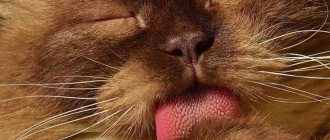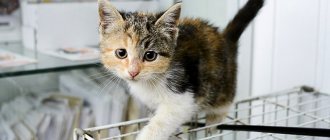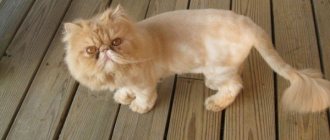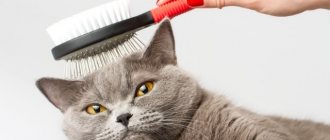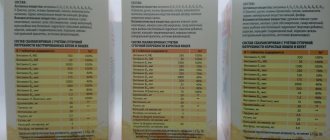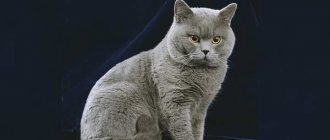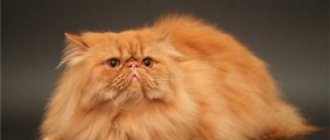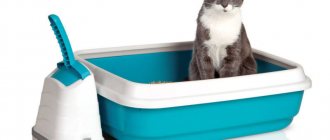Gorgeous coat of long-haired dogs
The most problems arise with dogs that look very stylish immediately after grooming. Among such animals one can note Yorkshires, poodles, Lhasa apsos, Shih Tzus, Havanese and Maltese lapdogs, as well as some other breeds and mestizo breeds, which were lucky enough to be born with elongated hair, which tangles and tangles so easily.
If you have a dog of one of the above mentioned breeds, or any other long-haired dog that quickly gets dirty without proper care and gets tangled, then you simply have no other choice but daily thorough grooming.
Even if you have given your dog a short haircut, it must be regularly washed with shampoo and combed thoroughly. Remember that your dog runs, digs, plays and walks in the same fur all the time.
Dogs with medium length hair
Among the dogs that have medium-length hair that does not tangle so quickly, we can distinguish the following breeds: Papillons, Cavalier King Charles Spaniels, Pomeranians and long-haired Chihuahuas, and some. etc.
A dog's coat is typically described as coarse, silky, or fluffy. The most difficult dogs to keep neat are those with soft, fluffy fur, such as Bichons, Yorkies or Coton de Tulears. In these dogs, tangles may appear even after the dog has been fiddling around in the grass or running around the house a little.
This is why dogs of these types are often groomed if their fur becomes tangled and tangles have formed. Be sure to consult with a professional groomer about choosing a shampoo and conditioner that can help solve such problems.
Decorative long-haired dogs
They are suited and even shown with hair combed up away from the eyes, which looks stylish in a bun.
Regular grooming is very important for these dogs, at least several times a week, but many dogs require grooming every day. At a minimum - daily combing. You need to pay special attention to problem areas where tangles most often form, for example, at the base of the dog’s ears, around the dog’s elbows and on the tummy.
Don’t think that a short-haired dog doesn’t really need coat care. Dogs with thick hair (like most pugs, for example) need to be brushed regularly, at least once a week, from paws to head. Smoothing and brushing help stimulate blood circulation and help the coat become shiny and shiny. You don’t want only long-haired dogs to look their best?!
Undercoat in dogs
As a rule, dogs have 2 types of coat - guard hair and undercoat. Guard hair is dense and coarse wool that performs a protective function. In winter, most dog breeds grow a thick, soft undercoat, which gives them extra warmth in cold weather. In summer, the guard coat provides the dog with protection from heat and aggressive sun rays.
Among the many decorative breeds that have both undercoat and guard hair are Pekingese and Pomeranians. It is very important to brush their undercoat when caring for their coat. Otherwise, one day you may encounter one huge tangle. Careful combing of the fur right down to the skin is also necessary to stimulate blood circulation and ensure free access of air.
When choosing a four-legged friend, rarely do dog owners think about how they will care for their pet’s fur. Attention is paid to the height, weight, character or even color of the animal, forgetting that it is the fur that will require the closest and most frequent attention.
Often dog lovers, instead of reliable information, listen to various myths that exist in their environment. Neighbors on the landing or work colleagues who have never owned dogs enthusiastically tell the newcomer that short hair practically does not shed, and dogs of wire-haired breeds do not cause allergies. Add to this the horror stories that all shepherd dogs always smell bad or that the hair of schnauzers must be plucked hair by tweezers, and you will understand how confused a new dog owner is.
Why are they needed?
Cats are one of the most popular pets among city dwellers. They have a lot of advantages: there is no need for walking, they do not need to be given a lot of attention, etc. But the fur of any purring pet (not counting Donskoy and other sphinxes) must be regularly looked after. And here special brushes come to the aid of the owner.
How to properly feed a 1 month old kitten without a mother at home
The main task of brushes is to remove dead hair from the animal's body. At the same time, the owner does not allow wool to fly all over the house. The tool is made in such a way that it does not injure the sensitive skin of the pet. And even vice versa, some models are able to stimulate blood flow. Cats actually get pleasure from massage brushes, just like gentle scratching.
Bristle brush for cats
Types of wool and care features
A significant difference in dog hair care is due to the different types of hair. Wool of different structure and quality requires completely different procedures and the regularity of their implementation. There are 6 types of wool classified.
Regular
The most common type of wool. Prominent representatives of this species: German, Belgian (Malinois), Central Asian (Alabai), East European Shepherd, Labrador, Moscow Watchdog, West Siberian Laika. Ordinary wool is easy to care for and does not require special equipment or waste of time. Regular brushing with a regular brush and washing as needed is sufficient. During the molting period, you can use a slicker and a furminator to speed up the process and facilitate the procedures.
Short
Representatives of short-haired or smooth-haired dog breeds with short guard hairs, with little or no undercoat. These include French and English bulldogs, boxer, Rottweiler, Doberman pinscher, bull terrier, pit bull terrier and American Staffordshire terrier, pug, chihuahua, etc.
Caring for the coat of dogs of these breeds is not difficult, but constant. Dogs living in city apartments lose hair all year round. To ensure that the floor in your home is not covered with a thin layer of wool, you need to comb it out regularly. To do this, use a brush with soft flexible bristles (or a regular clothing one) or a rubber one. Do not use iron combs with long and sharp teeth. Complete each procedure by wiping the fur (only in the direction of growth) with a soft piece of suede. This will give a beautiful natural shine to the hair and a well-groomed appearance.
Long
Owners of long hair: Scottish Shepherd (Collie), Sheltie, Newfoundland, South Russian Shepherd, Tibetan Mastiff, Afghan Hound, Irish Setter, Spaniel, Pekingese, Shih Tzu, etc. In order for the pet to have a beautiful and well-groomed appearance, the owner will have to put a lot of effort into effort.
Kinds
The product is manufactured in several versions. Depending on the type of wool, the owner selects the optimal tool for the ward. At the same time, brushing should not cause discomfort to the owner.
Bristle
The most popular category. It is recommended by most specialists and experienced breeders - felinologists. This brush is unique in that it is suitable for any type of coat. It effectively removes dead hair and creates a comb-over effect on the tail or legs.
Well suited for Abyssinian cats, British Shorthair, Bengal cats.
The bristles have a “massage” effect. This is another advantage of this model. The tool does not cause pain and will not cause stress to the cat.
Pukhoderka
Slicker for undercoat
For thicker coats and undercoats, a standard brush is not enough. Therefore, slicker coats were created for long-haired breeds such as the Nibelung, British Chinchilla, Ragdoll or Ragamuffin.
The model consists of curved metal teeth located on a square surface. It is with their help that the best quality combing of the undercoat occurs.
However, the product has a number of nuances that should be observed. Before using the slicker, it is recommended to comb your pet with a simple comb to immediately get rid of tangles or tangled hairs. And only after that you can start using the slicker brush.
Brushes - gloves
Mittens or gloves
The mitten brush is an improved version of the massage tool. It looks like a “mitten” or “glove” with silicone teeth on the inside.
You should take into account the fact that the model is not intended for combing wool. It only removes dead hairs, being an auxiliary tool during molting.
The mitten can be used on wet or contaminated surfaces. It is very convenient to work simultaneously with two mittens worn on both hands.
Double sided brush
Double sided
Double-sided brushes, as a rule, combine two models at once: a powder brush and bristles. On one side there are metal curved teeth, on the other there is a bristle coating. It is a universal option for lovers of domestic cats.
The operating principle is the same as that of brushes with a similar coating. First, the undercoat is combed out with the side with the metal teeth, and then the cat is finally combed with the side with the bristles.
Rubber brush
Rubber
In appearance, it looks more like an ordinary, familiar comb. The tool should consist of long teeth with balls at the end and a rubber coating. The balls have a protective function and prevent possible injuries to the cat's sensitive skin.
The balls tend to wear out over time. Therefore, the model must be changed when they no longer cover the sharp teeth.
Corner brush for wall mounting
Corner
This is a relatively new form of cat brush. Its main difference is that it does not require effort or time on the part of the cat owner, as it is simply attached to any corner surface in the house. This way, your pet will always have the opportunity to scratch his side without your participation.
In addition, valerian root is often added to the brush kit to further attract the cat’s attention. You will only have one task left - to periodically clean the brush from accumulated hair.
Auxiliary
Often, caring owners are faced with the fact that their pets with long hair constantly develop tangles. And these lumps cannot always be combed out without any problems. If difficulties arise during the procedures, you can use a special spray that softens tangled hairs.
Brushes and combs for dogs and cats
All dog breeds need coat care , even “hairless” ones and breeds without undercoat. So-called “hairless” dog breeds have areas covered with hair. As a rule, they belong to the so-called “hairdressing” breeds, which are regular visitors to grooming salons. Indeed, it’s scary to imagine a Chinese Crested with matted hair on its tail and ears, so even what it has needs to be washed, combed and trimmed.
However! There are also breeds of dogs that under no circumstances should be combed with any combs, be it with sparse, even with frequent, or even without teeth - ONLY with your hands. For example, the Puli or Komondor breeds.
Why you need to buy a brush or comb for your dog or cat:
- Wool (especially long) periodically gets dirty and tangled, forming tangles;
- Felted wool is a breeding ground for bacteria and a good refuge for parasites;
- Fleas that can annoy your pet can live in it and can be quickly picked up on your next walk;
- A dog or cat sheds periodically.
Even if your pet belongs to a breed of dog whose shedding is very weak or absent, you still cannot do without a comb. For the same reasons, cats also need brushing, although they are less likely to go outside.
Nice bonuses
While brushing with almost any brushes, combs, combs and furminators, you massage your pet's skin, increasing blood flow in all layers of the epidermis. Blood brings oxygen and nutrients to cells. Massage can be a great pleasure for your pet and is also a good way to calm a nervous pet.
Combs and brushes help to evenly distribute the secretion of the sebaceous glands throughout the coat. No matter how it may sound to the average person, it is sebum that gives the coat its natural shine and healthy appearance.
TOOLS
The most common tools that are used not only in everyday life, but also in grooming salons. In this article we will not consider them all, but as general information we will present the entire list:
- Combs;
- Brushes;
- Furminators;
- Scrapers;
- Puffers;
- Trimmers;
- Colt cutters.
Combs (combs)
They are distinguished:
- By the length of the teeth (long, short or combined);
- According to the shape of the teeth (round and others);
- By design (with regular or rotating teeth);
- For its intended purpose (daily care, for combing out fleas).
Any owner of a cat or dog knows that the choice of the length of the comb teeth depends on the length and thickness of the pet’s coat. I would like to note that in modern pet stores it is almost impossible to find combs with sharp tips that can injure his skin.
A comb (or comb) is the most suitable tool for grooming coarse hair. Moreover, it is often indispensable for dogs with long, thin hair and thick, unruly undercoat. For such pets, they created combs with teeth of different lengths and even with rotating round teeth. It can have the design of a regular comb (with or without a handle), as well as in the form of a rake, on which the teeth can be arranged in 1, 2 or 3 rows.
The advantages of such a comb are that it allows you to carefully comb even very thin tangled hair, without injuring the skin or accidentally pulling out hairs, penetrating the entire thickness of the hair. Short cloves will work through the top layer of fur, and long ones will tidy up the undercoat. The design is also suitable for long coats with very thick and dense hair.
The round shape and rotating design let the strands pass without catching them, and at the same time they massage the skin well. This is the most non-violent option, and if your pet doesn't really trust you when you pick up a hairbrush, try this accessory. Although, it is not recommended for use on breeds such as Yorkies and Malteses - owners of too long hair, since it is believed that long hairs can wrap around the teeth with all the ensuing painful sensations.
Pay attention to the frequency of the teeth and relate it to the thickness of the dog's (or cat's) coat. Usually they start combing such hair with a comb with sparser teeth, and then with a comb with fine teeth. A comb with fine teeth is especially needed when you want to make a beautiful, even parting in the fur or tidy up the hair behind the ears, on the face or in sensitive places: around the anus and genitals, as well as on the paws and the area around the eyes.
A short-toothed comb will also tidy up a short-haired dog, and will also help quickly and effectively get rid of fleas, lumps of dirt and massage the skin well.
Note : to prevent short hairs from falling off onto the floor after the procedure, collect the combed hair with a special roller, lightly running it over all treated areas.
To help the slicker
As practice shows, after treating wool with a slicker, dead hairs remain in it, which it cannot capture. If you are not lazy and after this procedure go through the fur with a comb again, you will finally clean your pet of unnecessary hair, and yourself from additional cleaning.
Weapons against fleas
Combs and fine-tooth combs are ideal and safe for removing fleas. If during a walk your pet actively interacted with “stranger” dogs (especially yard dogs), go through its fur with a comb before the fleas take root and multiply. They are combed out in one application and very easily, so if you form this habit (like washing your hands before eating), you will not need to spend money on flea products.
Note : There are several methods for ridding your dog or cat of fleas. These can be tablets, sprays, collars, shampoos and other devices. In general, they are harmless and only sometimes an animal may develop an allergy to some component. For this reason, using a flea comb for your puppy is the best option if you want to protect him from exposure to foreign substances, even if they are natural. Another option is to use special insect repellers that can be hung on a collar or attached to your own jeans pocket.
Slickers for dogs and cats
There are no dogs that don't shed at all. Even “bald” dogs, as we have already mentioned, have hair on their paws, tail, muzzle and ears. And if there is fur or a small edge, it will die off and grow back from time to time. Again, the exception is Komondors, in whom this process occurs once, when the puppy’s coat changes to “adult” fur. After this, it grows throughout the Komondor's life, but this does not mean that their coat is easy to care for. Often in such cases only specialists can do this.
Some breeds shed more than others, and if this is important to you, remember that those with curly or coarse coats (as well as hairless dogs) shed only a small amount of hair or have little shedding.
The peculiarity of shedding of representatives of breeds with hard hair is that the old hard hair is simply plucked out. Instead of a slicker, use trimming and stripping tools or simply use your fingers.
Puffer design
Professional groomers also call it a slicker. Today there are several models to choose from, the vast majority of which are very similar to a massage brush: a rectangular surface with an elastic rubberized insert, into which rows of wire bristles are tightly packed. The bristles are specially positioned at an angle so as not to scratch the skin. If you choose the right one and use it correctly, your pet will enjoy the procedure, and you will be able to comb out everything that is not needed, as well as prevent the appearance of tangles.
What to look for when choosing a powder brush:
- The larger the dog, the larger the working surface of the slicker should be;
- The teeth, regardless of their shape, should reach the skin without scratching it. For these purposes, manufacturers often specially treat the tips of the teeth with soldered drops of plastic, but this is not even necessary if used correctly. Before purchasing, carefully run the metal bristles over your skin - this will make it easier to understand how dangerous it is;
- Pay attention to the comfort of the handle so that during use you can concentrate on your work and prevent dangerous pressure on your pet's skin.
As for convenience, ask how easily you can remove combed wool from a slicker brush that is supposed to be washed, since along with the wool you remove dirt, dead skin flakes and small debris. Today there are designs that remove hair from the surface of the slicker with just the press of a button.
Furminators
Today it is the most effective alternative to the usual slicker. In just 1 time, the furminator can rid your pet of 90% of unnecessary hair. But this device is not suitable for all breeds, but only for those with dense undercoat.
Benefits of use:
- Combing time is reduced;
- The largest percentage of combed wool;
- The guard hair is not damaged;
- The skin is not injured, and the hair does not fall off and acquires a special radiance;
- Easy maintenance of the device.
The choice of model is based on such initial data as the length of the coat and undercoat. Long-haired large pets need to buy a furminator , which has a large working surface with teeth of maximum length. For breeds with short and medium hair, a smaller tool with teeth that fit tightly together is suitable.
Note : today you can also find furminators with a vibration function. On the one hand, this can be a pleasant addition in the form of a massage, but on the other hand, it can cause exactly the opposite sensations in the pet. How he will react is difficult to predict.
Brushes for dogs, cats and other pets
This is a must-have accessory that a caring owner should have. It is needed not only for caring for the fur, but also for the skin, and some of its types are convenient for applying special oils, balms and other cosmetics for the pet’s fur.
Conventionally, all types of brushes can be divided:
- According to the bristle material; (natural, metal, plastic or rubber);
- By design; (one-sided, two-sided glove or mitten)
- By appointment.
Classic brush with natural bristles
Used for combing and light massage. Its advantages are that it has antistatic properties and does not cause any allergic reaction or negative attitude in the pet. It is especially recommended to use this brush for pets with silky fur. It can be used as long as the pet has the nerves to withstand.
Synthetic bristle brush
Durable and soft. With its help, dust and fine dirt are effectively removed from the surface of the hairs. Can be used on any coat, including the longest. It is wear-resistant and provides excellent care for very dense, thick coats.
Brushes with natural and artificial bristles help to evenly distribute sebum along the entire length of the pile, as well as help untangle small tangles and straighten the hair well.
Brushes with metal teeth
As a rule, such brushes have a rubber base on the working surface, which can relieve excess pressure. The teeth massage the skin and untangle matted hairs well, preventing the appearance of tangles. They are also suitable for any breed of dog, with the difference that the longer teeth are more effective at combing longer hair.
Combination brushes
They are convenient to use for medium and long wool, since the working surface has teeth of different lengths. This allows for better combing. On such a surface there can be metal teeth and bristles at the same time. There are also combination brushes with brass bristles. They comb the fur without touching the skin.
Double sided brushes
They differ from ordinary ones in that they use both surfaces. As a rule, such a brush has metal teeth on one side, and natural or artificial bristles on the other.
The brush may have a wooden or plastic handle, or may not have one at all. In this case, it is equipped with special rubber textured inserts so that it cannot slip out.
Rubber and plastic brushes
This includes a rubber slicker that massages the skin pleasantly and painlessly. Also, rubber or plastic bristles in the form of pimples are applied to the surface of a special glove or mitten, or simply placed on the palm. This format is ideal for short-haired pets, and is convenient for the owner because it easily allows you to feel the shape of your pet.
How to choose a tool for combing wool
You should choose a product based on the external characteristics of the pet. For short-haired individuals, regular bristle brushes and mittens are suitable. If the coat is thick and has the same undercoat, then preference is given to a powder coat. A rubber-coated brush is more suitable for caring for the decorative fur that grows on the pet’s limbs, back and belly.
The number of teeth also depends on the appearance. The longer and more abundant the wool, the more teeth required.
It is advisable to choose devices based on natural materials, since cat fur tends to become electrified.
Long fluffy coat (collie, Newfoundland, chow chow, Spitz breeds)
Perhaps the most beautiful and labor-intensive type of wool. The long hair and thick, seemingly full undercoat actively sheds (if the dog lives in an apartment, this process is almost constant). Bonuses include the fact that combed wool spins well and, according to traditional healers, has a healing effect.
Daily care for a dog's fluffy coat comes down to thoroughly combing the fur with a slicker brush. This comb not only carefully separates the hairs, but also rids your pet of excess undercoat.
Advantages and disadvantages
The main and undeniable advantage of the product is the effective removal and combing of cat fur. The tool collects most of the dead hairs, preventing them from flying around the house. Some brushes act as a massager, which has a positive effect on your pet’s skin.
An additional advantage of all models is the optimal cost. On average, instruments are sold for 100-500 rubles, but there are also more expensive options. The maximum cost can reach up to 3 thousand rubles. Brushes are available in almost any pet store, as this is one of the important attributes of every cat owner.
Disadvantages include the low quality of cheap products. As a rule, they are sold at reduced prices, which should raise suspicions. Low-quality models do not provide any benefit and do not perform their main function.
Small smooth-haired dogs
Small, smooth-haired dogs can grow up to 40 cm. The weight of an adult usually does not exceed 16 kg.
The benefits of small dogs
Small dogs have a number of undeniable advantages:
- They are long-lived;
- Do not take up much space in the apartment;
- Practically do not shed;
- There is no need for a long walk (often in the rainy and cold season dogs are not taken out for walks at all);
- Pets of some breeds can accompany their owners not only on trips out of town, but also on shopping trips.
The main disadvantage is the frequent occurrence of increased nervous excitability and mental instability.
Chihuahua
Dogs of this breed are found in two types. Smooth-haired individuals have been known since 1888. The standard for long-haired Chihuahuas was approved in England in 1954. The breed was recognized by the FCI in 1959 (both varieties). Entries in the Guinness Book indicate that she is the smallest dog on earth. An ideal option for an apartment is that the weight of an adult pet does not exceed 3.5 kg. Character – lively, active, inquisitive.
Russian toy
Indoor (decorative) breed of dog, bred in Moscow. There are two varieties: smooth-haired and long-haired. Height – 20-28 cm, weight up to 3 kg. Recognized by the International Film Festival in 2017. The coat is smooth but dense. The color is predominantly dark (brown or black). They are difficult to train and cannot be left alone for long periods of time. They live up to 15 years and do not require walking.
Toy Fox Terrier (American)
A type of fox terrier, height from 21 cm to 30 cm, weighing no more than 3.5 kg. Bred from the Smooth Fox Terrier breed. It does not require special care. Recognized in America in 1936. Life expectancy is up to 14 years. Contained exclusively in the apartment.
Smooth Fox Terrier
The Smooth Fox Terrier is a medium-sized (up to 40 cm, weight - maximum 8 kg) hunting dog . Coat color is white, cream or fawn. The hair is dense, smooth, there is no undercoat. Requires a long walk. They live 10-12 years. There have been cases of poor tolerability of drug therapy.
Miniature Pinscher (Miniature Pinscher)
German breed, the main purpose is to catch rats and small rodents. The coat is tight-fitting and smooth. Color – all shades of red and brown, black and tan. At the withers, dogs reach 30 cm, weight – up to 5 kg. They practically cannot tolerate low temperatures and require wearing insulated clothing during this period. They have been pleasing owners for almost 15 years.
Jack Russell Terrier
Belongs to the hunting class of dogs. Height – 25-30 cm. Weight rarely exceeds 8 kg. Has excellent working qualities. They are extremely active and can be aggressive towards other animals. They require long walks with high intensity exercise.
Pug
Strongly built dogs have folds on the forehead. Decorative, have an obedient character. Very sociable, love to play. Males are no higher than 30 cm at the withers, weighing no more than 10 kg. The coat is beige, smooth, shiny. They do not require special care and are inactive. They may suffer from excess weight. With proper nutritional control they live up to 15 years.
Basenji
The Basenji is a “no-bark” dog. Instead of the classic dog bark, it makes peculiar sounds that vaguely resemble rumbling. There is no smell. Origin: Central Africa, at least 3000 BC. They have strong immunity. The character is very energetic, they love movement. Height – 40-43 cm, weight – up to 11 kg (males).
French Bulldog
Once a fighting dog, today representatives of this breed are far from bloody battles. Cute French bulldogs grow up to 35 cm, the weight of an adult is no more than 15 kg. The coat is smooth, lies close to the body, there is no undercoat. They respond well to training. They have a cheerful, good-natured character.
Manufacturers
Almost all leading brands of grooming products are engaged in the production of brushes for pet care. Among them, “Hello Pet” (Taiwan) stands out, which offers a wide range of tools at an average cost of 300-1000 rubles. Products from this company can be found in both large and small pet stores.
(Russia) offers not only grooming tools, but also other important accessories for pets. These include carrier bags, dog clothing and rodent cages. It is Triol that is famous for its huge number of products at an affordable price (100-400 rubles), intended for all types of pets.
German brush “Trixie”
The German brand “Trixie” is distinguished by the increased cost of its products (from 200 and more than 1000 rubles). However, their company's instruments are of high quality, which are often spoken positively about.
"VIPet" (Russia) is engaged in the production of ammunition and parts for leashes, collars, etc. Under this brand you can also find dog grooming products, toys and other products for dogs and cats. On average, instruments are sold for 180-900 rubles.
This is an incomplete list of companies that provide grooming tools to the buyer. You can often find “Dezzie” (Russia), “Nobby” (Germany), “Flamingo” (Belgium), etc. in stores.
We recommend giving preference to products made from natural materials. If possible, it is better to avoid brushes with metal teeth, as for the delicate and very sensitive skin of a cat, they can not only become a source of discomfort, but also cause serious damage.
Which pets need to be brushed?
It’s probably easier to say who you don’t need to do this procedure with. Decorative rats are combed least often, although this does not mean that their fur does not need care. By the way, rats have a special ritual when an older individual crawls under or over a younger one several times. These caresses, among other things, are used specifically for hair care.
The rest of the pets take care of their coats as nature dictates, but keeping them at home imposes certain responsibilities on the owner to make this task easier for them, especially during the molting period.
Therefore they comb:
- Dogs
- Cats
- Decorative rabbits
- Ferrets
- Guinea pigs
- Chinchilla
- And even little hamsters
Each type of pet has its own rules, but first let's talk about choosing brushes and combs for dogs and cats, since this is the most common type of our four-legged friends.
Ergonomics
This needs to be discussed separately. Combing a Djungarian and tidying up a St. Bernard's coat require different procedures, and your fatigue depends on how convenient the tool is.
To prevent the procedure from turning into torture for you, pay attention to the handle of the tool:
- It should be light and durable;
- Its shape should be such that it fits snugly in the palm of your hand, filling in the grooves and bumps. Then, during the work, unnecessary muscle tension will not be created and the hands will not get tired;
- If the handle has a textured finish (pimples or other raised design), the handle will not slip out even if you wet your hands with water or grooming product. Sometimes this effect is achieved through rubberized inserts or a combination of the described design features. Such a handle will not create additional stress on the hands trying to hold the slipping tool.
Responsible manufacturers or those who create professional instruments develop the design of the handle not only taking into account the anatomical features of the structure of human hands, but also the nuances of biomechanics inherent in the procedure.
Note : usually this aspect is not often mentioned and, when talking about something “a good tool,” we may not realize that, for example, when designing a handle, the engineer took into account the direction of movement and calculated the load on the muscles.
Such features often distinguish a cheap tool from an expensive and professional one. Everything said about ergonomics applies to a tool for any purpose.
Terms of use
The device is used only on dry wool (with the exception of a mitten). All actions are careful, not abrupt. Some pets are particularly sensitive and the tool may cause discomfort. If your pet doesn’t really like violations of personal space, you can enlist the help of another person.
First you need to put your pet in the right position. Ideally, it should be standing, but it is acceptable to work if the cat is lying on its side. Fixing is not necessary if the pet is calm and loves such procedures. But if he is restless and cannot remain in one state for a long time, it is better to gently hold him with your left hand by the lower part of his neck.
A good distraction is a game. Toys will help a wayward or aggressive cat “switch”, and the owner will have some time for brushing.
Next, the brush work begins. Using smooth movements, the owner scratches the cat, first along the direction of hair growth (from head to tail). To achieve maximum effect, it is recommended to comb also against the growth (from tail to head). In hard-to-reach areas, apply several times with a damp hand against the growth of the fur.
Recommendations from experts
Animal groomers and felinologists - breeders do not advise neglecting the procedures for caring for the coat of the ward, especially if the pet belongs to long-haired breeds. Long hair is more prone to tangling than short hair. This means that lack of brushing can cause many tangles to appear throughout the body. Tangles of dense texture no longer lend themselves to “gentle” methods, and the only way to get rid of them is to comb them with a tangle cutter or cut them out with scissors. This can negatively affect the furry cat's appearance.
